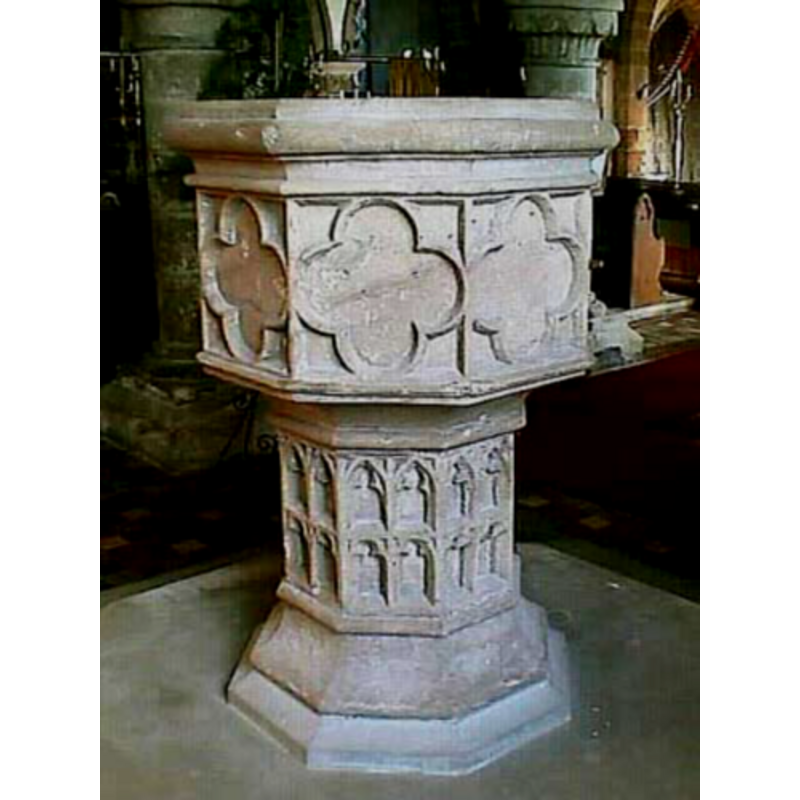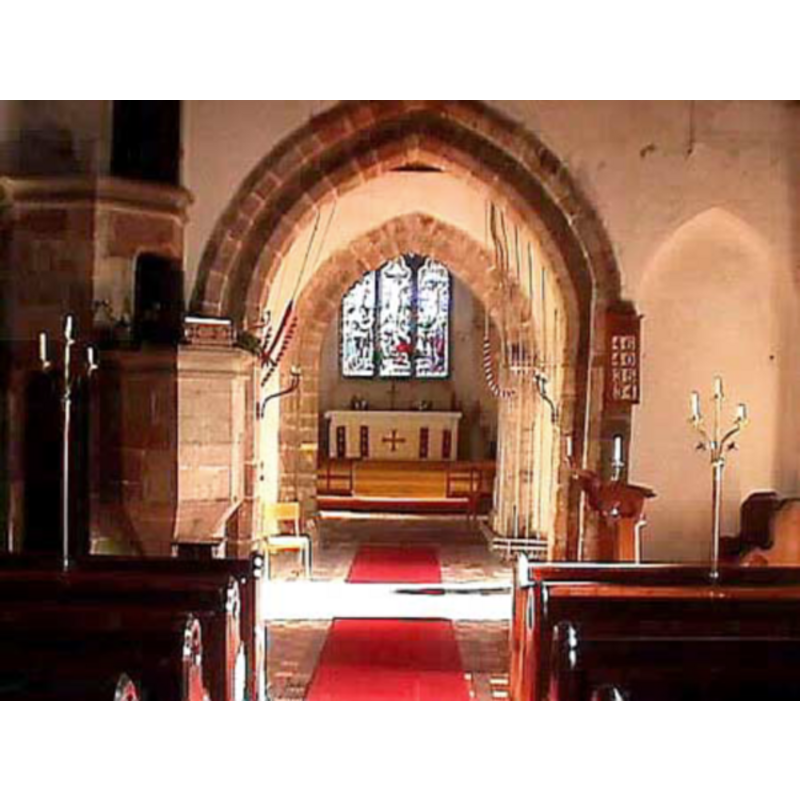Staunton nr. Coleford No. 2 / Stantun

Results: 8 records
B02: design element - motifs - moulding - 2
LB01: design element - motifs - moulding - 2
LB02: design element - architectural - arch or window - trefoiled - 16
INFORMATION
FontID: 05894STA
Object Type: Baptismal Font1
Church/Chapel: Parish Church of All Saints [formerly St Nicholas']
Church Patron Saints: All Saints [earlier dedication St. Nicholas]
Church Location: Staunton Rd, Staunton, Gloucestershire, GL16 8NU, UK
Country Name: England
Location: Gloucestershire, South West
Directions to Site: Located 3 km from Coleford, on the road from Mitcheldean to Monmouth, 5 km NE of Monmouth
Ecclesiastic Region: Diocese of Gloucester
Historical Region: Hundred of St. Briavels
Font Location in Church: Inside the church
Century and Period: 15th century [re-cut?], Perpendicular [altered?]
Cognate Fonts: Burton-on-the-Water, Icomb, Upper Swell
Credit and Acknowledgements: We are grateful to John Wilkes, of The Gloucestershire Photo Library, for the photographs of church and font
Font Notes:
Click to view
There is an entry for this Staunton [variant spelling] in the Domesday survey [http://opendomesday.org/place/SO5512/staunton/] [accessed 12 December 2018] but it mentions neither cleric nor church here. Lewis' Dictionary of 1848 reports "a finely-sculptured font" in the parish church of All Saints. Described in Tyrrell-Green (1928) as a baptismal font of the 15th century ornamented with quatrefoil forms on the basin panels typical of the Perpendicular period. The entry for this parish in the Victoria County History (Gloucester, vol. 5, 1996) notes: "A church was recorded at Staunton from 1144 when Baderon of Monmouth confirmed it to Monmouth priory [...] Monmouth's priory's right to the church was confirmed by papal bull in 1186 [...] The church of ALL SAINTS was so called by 1735 [...] but had a dedication to St. Nicholas in 1144 [...] and until 1403 or later [...] The Norman font is a cube of stone, once thought to have been a Roman altar, hollowed out and given a band of pellet decoration. (fn. 325) It was presumably replaced in the 14th century by the octagonal font of that period which also survives in the church. (fn. 326) About 1830 the early font was standing outside to catch rainwater from a roof-spout and was moved inside; it, and the ancient pulpit, were returned to use at the restoration of 1872." Verey & Brooks (1999-2002) note: "Fonts. One is very early Norman, a rough cube with an upper band of pellet moulding, and crude decoration of large raised triangles. The other is octagonal, Late Perp[endicualr], but completely recut." The later font consists of an octagonal basin with vertical sides decorated with large quatrefoiled panels below a protruding roll moulding at the upper rim; the short concave underbowl appears plain; the stem, with a moulding at each end, has a double row of trefoil arches or windows; splayed octagonal lower base of two volumes. Octagonal plinth. [NB: cf. Index entry for Staunton nr. Coleford No. 1, for an object believed to have been a Roman altar that was used in this same church as a baptismal font in the past].
COORDINATES
Church Latitude & Longitude Decimal: 51.810043, -2.652236
Church Latitude & Longitude DMS: 51° 48′ 36.16″ N, 2° 39′ 8.05″ W
UTM: 30U 523975 5739968
MEDIUM AND MEASUREMENTS
Material: stone
Font Shape: octagonal (mounted)
Basin Interior Shape: round
Basin Exterior Shape: octagonal
REFERENCES
Victoria County History [online], University of London, 1993-. Accessed: 2018-12-12 00:00:00. URL: https://www.british-history.ac.uk.
Lewis, Samuel, A Topographical Dictionary of England, Comprising the Several Counties, Cities, Boroughs, Corporate and Market Towns, Parishes, Chapelries, and Townships, and the Islands of Guernsy, Jersey, and Man, with Historical and Statistical Descriptions [...], London: S. Lewis, 1831
Tyrrell-Green, E., Baptismal Fonts Classified and Illustrated, London: Society for Promoting Christian Knowledge: The Macmillan Co., 1928
Verey, David, Gloucestershire, London: Penguin Books, 1999-2002

